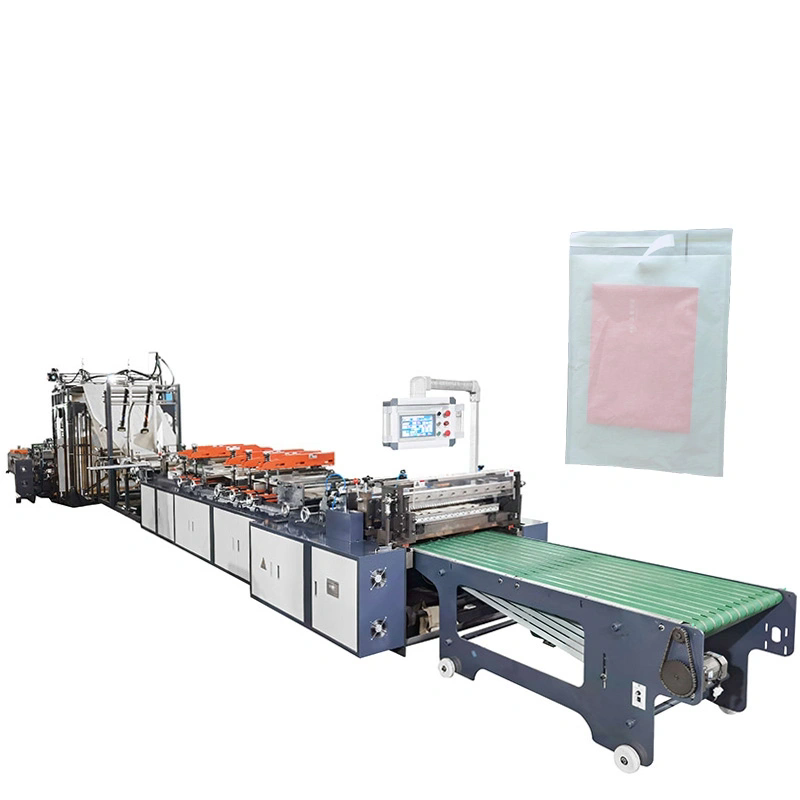What Is a Paper Bag Making Machine and How Does It Revolutionize Packaging?
2024-12-12
In today’s environmentally conscious world, paper bags have become a preferred alternative to plastic bags due to their eco-friendly nature. As demand for paper bags continues to rise across various industries—from retail to food services—there is an increasing need for efficient, high-speed production. This is where the paper bag making machine comes into play. But what exactly is a paper bag making machine, and how does it contribute to the packaging revolution?
In this blog, we’ll explore the importance of paper bag making machines, how they work, and why they are crucial to meeting the growing demand for sustainable packaging solutions.
What Is a Paper Bag Making Machine?
A paper bag making machine is a specialized piece of equipment designed to manufacture paper bags from rolls of paper. These machines automate the process of producing paper bags, which are widely used in retail, groceries, and various other sectors. The machine converts large rolls of paper into bags by cutting, folding, gluing, and sealing the paper in specific shapes and sizes.
The versatility of these machines makes them suitable for producing different types of paper bags, including flat bags, square-bottom bags, and even custom-shaped or printed bags. Depending on the model, paper bag making machines can handle various grades of paper, such as kraft paper, coated paper, or recycled paper, allowing manufacturers to offer a variety of bag styles to meet customer needs.
How Does a Paper Bag Making Machine Work?
The process of making paper bags with a machine involves several key steps, all of which are automated for efficiency. Here’s a breakdown of how the machine typically works:
1. Paper Feeding
Large rolls of paper are fed into the machine. The paper is typically sourced in bulk rolls, and it can vary in thickness, texture, and color depending on the desired final product. The roll is loaded onto the machine’s feeding section, where it is unrolled and prepared for further processing.
2. Paper Cutting and Shaping
The paper is then cut to the required dimensions. The machine may be programmed to cut the paper into rectangular sheets or to specific custom sizes. In some cases, a printing station may be included, allowing the bag to be printed with logos, branding, or designs before it is shaped.
3. Folding and Bottom Forming
After the paper is cut, the machine folds the sides of the paper to create the bag’s body. For square-bottom bags (such as those commonly used for groceries), the machine automatically forms a flat, wide bottom by folding the paper in such a way that it can stand upright.
4. Gluing or Sealing
Once the bag has been shaped, the machine applies glue to secure the sides of the bag. This gluing process ensures that the bag stays sealed and holds its shape. In some models, heat sealing is used instead of glue, providing a stronger and more durable seal.
5. Bottom Creasing and Taping
To enhance the durability and functionality of the paper bag, the bottom section is creased and taped or glued to create a robust, sturdy foundation. This is particularly important for bags that need to hold heavier items.
6. Final Inspection and Stacking
After the bags are formed, they undergo a final inspection to ensure quality control. This may include checking for printing errors, improper folds, or weak seals. The bags are then stacked and prepared for packaging or distribution.
Types of Paper Bag Making Machines
There are different types of paper bag making machines available, each designed to meet the varying needs of manufacturers and consumers. Some of the most common types include:
1. Fully Automatic Paper Bag Making Machine
These machines are highly efficient, requiring minimal human intervention. They can handle high volumes of production and are often used by large manufacturers. They typically include all features such as automatic feeding, cutting, folding, sealing, and stacking.
2. Semi-Automatic Paper Bag Making Machine
Semi-automatic machines require some manual intervention for specific tasks, such as loading paper rolls or changing settings. They are suitable for medium-sized businesses or companies that need flexibility in production.
3. Manual Paper Bag Making Machine
This type of machine is often used by small-scale manufacturers or for prototype runs. Manual machines typically involve more labor-intensive processes but are cost-effective and easy to operate.
4. Flexographic Printing Paper Bag Making Machine
These machines are equipped with flexographic printing units that allow for custom prints on the paper bags. They are commonly used by businesses looking to add logos, designs, or branding to their bags.
Why Are Paper Bag Making Machines Important?
1. Sustainability and Eco-Friendliness
As environmental awareness grows, businesses are increasingly turning to paper bags as a more sustainable alternative to plastic. Paper bags are biodegradable, recyclable, and compostable, making them an attractive option for eco-conscious consumers. Paper bag making machines help meet this demand by producing paper bags efficiently and cost-effectively, thus reducing the environmental impact of packaging.
2. High Production Efficiency
One of the biggest advantages of paper bag making machines is their ability to produce large quantities of bags in a short amount of time. Whether you need thousands of paper bags daily or larger custom orders, these machines can meet the needs of both small and large-scale operations, making them ideal for high-demand industries.
3. Customization and Branding
Customizable paper bags are a great way for businesses to promote their brand. Many paper bag making machines can be fitted with printing units to allow for high-quality custom printing of logos, designs, and other branding materials. This capability adds an extra level of versatility to the production process, helping companies create unique and attractive packaging.
4. Cost-Effectiveness
Although the initial investment in a paper bag making machine may be high, the long-term benefits are significant. The automation of production reduces the need for manual labor, lowers production costs, and increases throughput. Additionally, the machines can handle various types of paper materials, which further adds to their cost-effectiveness.
5. Durability and Quality
Paper bag making machines are designed to produce high-quality bags that are durable and capable of carrying heavier items. The materials used in the construction of these bags—combined with the machine’s precision—ensure that the final product is reliable and strong.
Applications of Paper Bag Making Machines
Paper bag making machines serve a wide range of industries and applications. Some of the key areas where these machines are used include:
- Retail Industry
Retailers often use paper bags for packaging products in stores, especially for grocery items, clothing, and gifts. Paper bags can be printed with store logos, promotional messages, or seasonal designs.
- Food Packaging
Food businesses, especially bakeries, restaurants, and takeout services, frequently use paper bags to package food items. These bags are an ideal choice for fast food, takeout, and bakery goods because they are breathable and eco-friendly.
- Pharmaceutical Packaging
Paper bags are also used in the pharmaceutical industry to package products such as medicine and medical supplies. In these cases, the bags need to be of a specific strength and durability to handle heavier or bulkier items.
- Promotional and Gift Packaging
Custom-designed paper bags are popular in the gift and promotional sectors. They are used for packaging gifts, promotional items, and giveaways, with personalized designs and logos that help businesses stand out.
Conclusion: The Future of Paper Bag Making Machines
The growing demand for sustainable packaging has made paper bags an essential part of the modern packaging industry. Paper bag making machines provide an efficient, cost-effective way to produce high-quality, eco-friendly paper bags for a variety of applications. Whether you are a small business or a large manufacturer, investing in a paper bag making machine can help you meet the demand for environmentally conscious packaging while maintaining high production efficiency.
As sustainability continues to drive consumer preferences, the role of paper bag making machines will only grow in importance. By automating the bag-making process, these machines allow businesses to produce a large volume of bags, reducing costs, promoting brand identity, and contributing to a more sustainable future.



